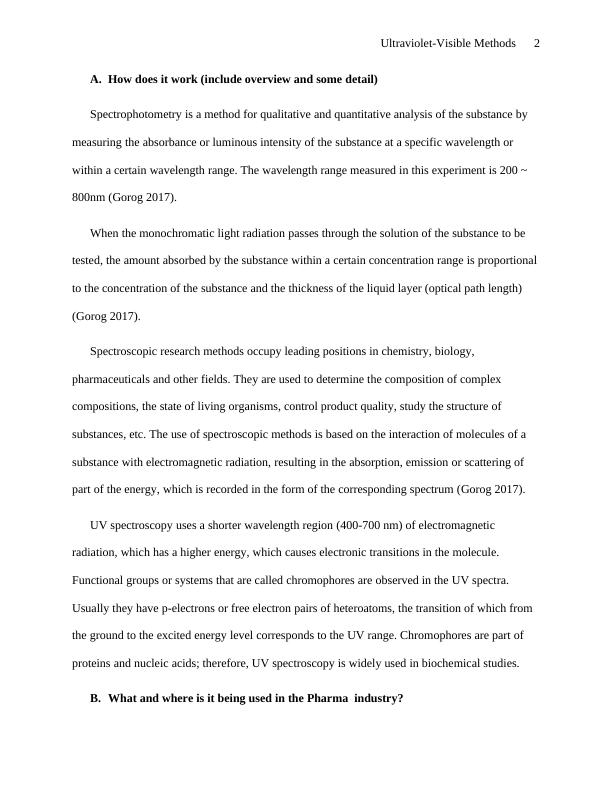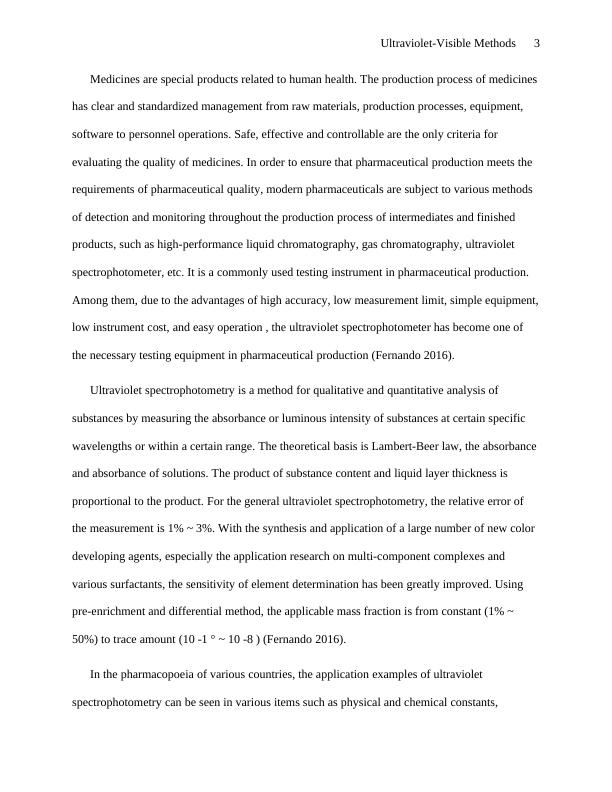Ultraviolet - Visible Methods Research 2022
Analyzing the working principle, current usage, future potential, advantages and disadvantages of Ultraviolet-Visible methods in the Pharma industry, and providing a schematic drawing of a continuous flow operation that incorporates this measurement method.
8 Pages1761 Words24 Views
Added on 2022-09-25
Ultraviolet - Visible Methods Research 2022
Analyzing the working principle, current usage, future potential, advantages and disadvantages of Ultraviolet-Visible methods in the Pharma industry, and providing a schematic drawing of a continuous flow operation that incorporates this measurement method.
Added on 2022-09-25
ShareRelated Documents
End of preview
Want to access all the pages? Upload your documents or become a member.
Determining the Level of Glucose in Urine Sample using DOGPAP Assay through Spectrophotometer
|5
|1300
|87



